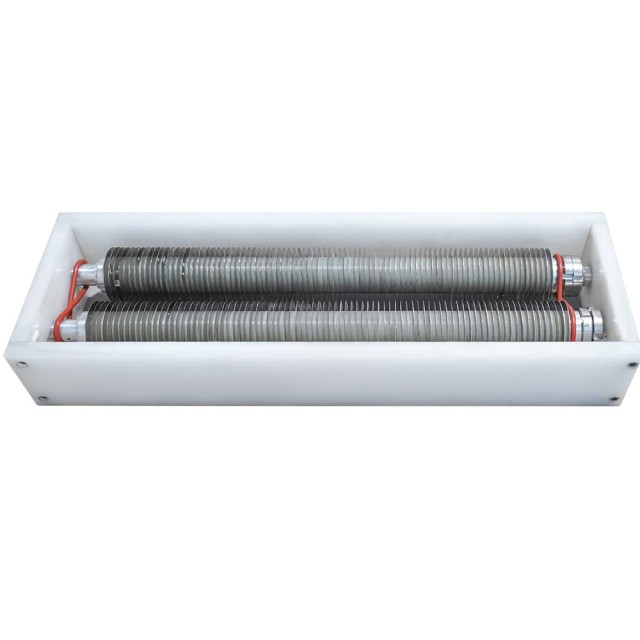When I first started looking into beekeeping, I had no idea what kind of equipment I would need. I quickly realized that there is a lot of specialized equipment involved in beekeeping. The most intimidating part for me was trying to figure out what kind of equipment I would need to get started. Thankfully, there are a lot of resources available to help new beekeepers figure out the basics. With a little research, I was able to put together a list of the essential equipment I would need to get started in beekeeping.
When it comes to beekeeping supplies, we focus on the essential pieces needed to take care of bees. We answer the most common questions we get about beekeeping supplies and provide a few options that will work for you.
What Beekeeping Equipment Do I Need?
- Protective Gear: Something to protect you from being stung
- Hive Tool: Essential for opening hives and checking on progress
- Smoker: The quintessential beekeeping tool that has been around since the beginning
- Feeding Supplies: Something that makes it easy to give bees sugar syrup
- Beehive: The actual equipment that the bees live in
A beehive kit including frames and foundations 2) A smoker to calm the bees 3) A bee brush to gently remove bees from frames 4) A hive tool to open and close the hive 5) A bee suit for protection
A beekeeper may need a honey extractor or a swarm trap later on, but those are generally not needs during the first year.
Protective Gear
Bees are amazing creatures and their honey is delicious, but they can also be dangerous. When working with bees, it is important to wear the proper protective gear to minimize the risk of being stung. Bee stings can be painful and even dangerous, so it’s not worth taking the risk of not being properly protected. Trust us, your bees will thank you for it!
Beekeeping can be a risky business, but the risk can be reduced by learning what will set off a bee's defensive behavior. You'll see beekeepers taking care of bees without protective gear, and as you learn more about bees, you'll be able to take care of them more safely.
Common Protective Gear
- Beekeeping Gloves
- Beekeeping Jackets
- Beekeeping Suits
- Beekeeping Veils
- Other Protective Gear
Beekeeping Gloves
Beekeeping gloves are made of a thin leather or fabric so the beekeeper can still feel what the bee is doing. Beekeeping gloves differ from gardening gloves or work gloves in a few ways. Most notably, the sleeve on a beekeeping gloves extends past the elbow, often overlapping with the sleeve on the beekeeper's jacket or suit. This design prevents bees from crawling between the two garments. The glove also has a snug fit at the wrist to keep bees from crawling up the sleeve. Beekeeping gloves are made of thin leather or fabric so the beekeeper can still feel what the bee is doing.
Beekeeping gloves are typically white or light in color to prevent bees from mistaking them for something they want to sting. The light color also makes it easier for beekeepers to see the bees. Dark colors are generally disliked by bees and are not the first place they go when looking for something to sting.
Glove Materials
Of the two, goatskin gloves are generally the more popular choice for beekeepers. The thinner leather provides good dexterity and precision when working with bee frames, while still offering decent protection from stings. Cowskin gloves are thicker and provide more protection from stings, but the trade-off is that they can be more difficult to maneuver when working with bee frames.
Some beekeepers opt to use latex gloves when taking care of their bees. This is a good option for some as it gives beekeepers a significant amount of dexterity and good protection from stings. Beekeepers who choose to use gloves must be aware of the potential for them to tear and Beekeepers should have a backup pair of gloves in case of a tear.
Latex gloves are great for when working with sugar syrup or medications for your bees. They help protect your wrist better and don't attract bees when they have had enough of you.
Beekeeping Jackets
Many beekeepers find that jackets are more comfortable and easier to move in than a full bee suit. Jackets also offer more ventilation, which is important in hot weather. Beekeepers who use jackets typically wear gloves, a hat, and a veil.
The beekeeping jacket is a great choice for those looking for protection from stings. The jacket is easy to put on and take off, making it ideal for those who are new to beekeeping or don't have a lot of experience. The beekeeping jacket offers enough protection from stings to keep you safe, while still being easy to maneuver in.
In fact, they will only sting humans if they feel they are being threatened in some way. This is why it is important for beekeepers to always be gentle with their bees and to never make any sudden movements around them.
The two types of beekeeping jackets are the traditional style and the ventilated style. The traditional style beekeeping jacket is made of a heavy material, usually canvas, and has a wide skirt that reaches down to the bee keeper's knees. This style of beekeeping jacket covers the beekeeper's entire body, including the head and face. The ventilated beekeeping jacket is made of a lighter material, usually denim, and has vents running along the sides and back. This style of beekeeping jacket does not cover the beekeeper's head or face, but does provide some protection from stings.
A good quality beekeeping jacket will be made of a material that is durable and will not tear easily. The material should also be thick enough to protect the beekeeper from being stung.
Another sign of a good quality beekeeping jacket is the Velcro straps. These should be sewn on securely and be adjustable. A final sign of a good quality beekeeping jacket is how the zipper is sewn in. The zipper should be sewn in with heavy thread and have a flap of fabric over it to keep the bees out.
It is comfortable, breathable, and covers you completely. The single-layer jacket is less expensive than the double-layer jacket. A single-layer cotton beekeeping jacket is a great option for those looking for a basic, affordable jacket. The tight weave of the cotton fabric is comfortable and breathable, and the jacket will cover you completely.
This type of material is best for a backup jacket or something for guests to wear when visiting your hives. The material on these jackets isn’t like a cotton towel or denim but are more like a long-sleeve button-down. These jackets get fairly hot, so it's important to take breaks often when wearing one.
The quality of beekeeping jackets can vary greatly from supplier to supplier, but most of the good ones have a little heft to them. This weight comes from the multiple layers of fabric used in the construction of the jacket and is necessary to provide adequate protection from bee stings. The best jackets also have a Venturi veil that helps keep the bees away from your face and head.
When it comes to beekeeping jackets, it seems like you get what you pay for. The lower quality beekeeping jackets are typically made from a single layer of thin cotton, which doesn't offer much protection. Additionally, the overall design and fit of these jackets is often not ideal. To get a good beekeeping jacket, look for one with quality zippers, thick fabric, and a removable veil.
The ventilated beekeeping jacket is a newer option that is becoming more popular among beekeepers. The jacket is designed to provide a thick layer of protection with several layers of permeable foam or mesh. The mesh allows the air to circulate through the jacket, but the thickness of the material is too dense for a stinger to penetrate. The ventilated beekeeping jacket is a great option for those looking for extra protection from stings.
When shopping for a beekeeping jacket, it is important to find one that is made of high quality materials. These types of beekeeping jackets do cost more, but they are a good value when priced around $100-150 dollars. They shouldn’t cost any more than that. Beekeeping jackets made of inferior materials will not last as long and will not provide the same level of protection. A beekeeping jacket is an important investment for any beekeeper, and it is worth it to spend a little extra to get a high quality jacket.
If you are looking for a durable beekeeping jacket, this is the one you want.The beekeeping jacket is a great choice for backyard beekeepers. It is durable and can last for four or more years. Additionally, the beekeeping jacket is cool and comfortable to wear, even during hot summer months.
The better quality jackets will have a much finer mesh that will allow air to flow through while keeping bees out. Beware of ventilated beekeepers jackets that cost less than $80. The material used is not of good quality and the differences in ventilated material are hard to tell. The better quality jackets will have a much finer mesh that will allow air to flow through while keeping bees out.
Beekeeping Suit
The beekeeping suit is a one-piece design that is put on all at once. The suit covers the entire body and protects the beekeeper from being stung. The beekeeping suit is white in color so that the bees are not attracted to the beekeeper. The beekeeping suit has a veil that covers the head and face so that the beekeeper can see what he or she is doing.
The vast majority of beekeepers, probably 70%, use the beekeeping jacket and not the full suit. This is because the jacket offers good protection while still allowing the beekeeper to move freely. The full suit can be quite hot and uncomfortable, so it's not really necessary unless you are working with a particularly aggressive hive.
The beekeeping suit covers the entire body, head to toe, and has a veil that protects the face. Many beekeepers choose to also wear gloves when working with their hives.
Bees are often attracted to the sweet smell of fruits and flowers, which is why they are often found near picnic areas and gardens. Beekeepers need to be careful when handling their hives, as a single sting can be painful and even fatal for some people. There have been many reports of people being stung by bees when they were not expecting it, so it is important to be cautious around bees.
The beekeeping suit is a great choice for those who want to be protected from head to toe while working with bees. The ventilated option is the best choice for those who are looking for a cooler option, as the full suit can be quite hot. The non-ventilated suit will be even hotter, so it is best to choose the ventilated option.
Jackets can be restrictive and uncomfortable for kids. When buying a bee suit for kids, it is better to buy a full suit instead of just a jacket. Full suits are much easier for kids to wear safely and are more comfortable. When introducing kids to bees, it is important for them to be comfortable so they can focus on the experience and not on their clothes. jackets can be restrictive and uncomfortable for kids, so a full suit is the best option.
Beekeeping Veil / Hat
The vents along the side of the veil help to keep you cool, and it allows you to see what you are doing.
When you are looking for a beekeeping veil, you want to find one that detaches from the suit or jacket. This way, you can wash the veil separately by hand. It is best to hand-wash veils in order to keep the screen from being damaged or bent in the washer.
The popular veil is the round veil, which covers your entire head and face. The hat has a wire rim that allows you to see clearly, and a wide, gathered skirt that hangs down your back. The other style is the veil with shoulder drapes. This one is less popular, but some beekeepers prefer it because it gives them better peripheral vision. The two different styles of veils are the round veil and the veil with shoulder drapes. The round veil covers the entire head and face, while the veil with shoulder drapes gives the beekeeper better peripheral vision.
Round Veil
This type of veil is ideal for those who want extra protection and ventilation. The design completely surrounds the head, providing a barrier against stings. The veil also allows some light through, which can be helpful when working with bees.
If you're looking for a great veil, these are a great option. However, if the quality of the screen is poor, the large screen on the veil is an opportunity for it to be torn. This is not the case with a high-quality mesh.
Accordion or Fencing Veil
The beekeeping Accordion or Fencing Veil that is popular among beekeepers because it is easy to store and has a smaller area. This type of veil is also popular because the back of the veil is made from the same material as the jacket. When you turn your head, you don't have to worry about hitting somebody nearby.
Tips
The quality of the mesh will determine how many insects or other particles will get through. A higher quality mesh will have a closer weave and be less likely to tear. It will also last longer. There are different types of mesh available for veils, and the quality of the mesh makes a difference in how effective the veil is. A higher quality mesh will have a closer weave and be less likely to tear, making it more effective at keeping insects and other particles out. The mesh will also last longer, making it a better investment in the long run.
I've found that some of the accordion/fencing beekeeping veils are designed to have the screen different distances from your nose. I didn't realize this until it was too late when I bought a jacket with a GIANT veil. The veil was so far in front of my face it was cumbersome. I ended up upgrading to a better quality veil with a smaller screen that is closer to my face.
When looking for the right beekeeping veil, you want to find one that covers your entire head and face. You don't want the screen to be too close to your face, as this can lead to bee stings. Take a look at how the veil looks on the model so you can get an idea of how close it would be to you.
Hive Tool For Beekeeping
A hive tool essentially is a crowbar for beekeepers. We use it to pry open hives, scrape off excess wax and prop up frames. A hive tool is an absolute essential for any beekeeper. Some beekeepers have several hive tools, each with a different purpose. Others have just one that they use for everything. No matter how many hive tools you have, you will always find a use for them.
Bees will coat the inside of the hive with a sticky resin called propolis. This makes it difficult to open the hive and remove the frames without a hive tool.
The other hive tools tend to be more specialized and beekeepers usually only use one or two of those in addition to the standard hive tool.There are a lot of options for hive tools, each with different little features that beekeepers may or may not find helpful. The most popular hive tool is the standard hive Tool, used by about 80% of beekeepers. The other hive tools tend to be more specialized, and beekeepers usually only use one or two of those in addition to the standard hive tool.
There are a few different types of hive tools available on the market, so you may be wondering which one is the best to use. The good news is that because you will need to get two hive tools in case you lose one, you can get two different types and try each one for yourself. This way, you can see which tool works better for you and your hive. Some hive tools have a serrated edge, while others have a straight edge. The serrated edge can be helpful for cutting through wax, while the straight edge is better for prying things apart. Ultimately, it’s up to you to decide which tool you prefer.
Bee Smoker For Beekeeping
When a beekeeper needs to open up their hive, they will almost always use a bee smoker. The smoker produces smoke that essentially calms the bees down and makes them less defensive. This is important because it allows the beekeeper to work without the bees feeling threatened and attacking.
The effects of smoke on bees is not fully understood, but it is known that it calms them. Beekeepers use this to their advantage, smoking the bees before handling them. This prevents the bees from getting agitated and attacking the beekeeper. The bees will actually preoccupy themselves with feeding on honey and generally ignore the beekeeper. The effect of the smoke doesn’t last forever, typically long enough for the beekeeper to so whatever needs to be done.
Bees are very sensitive to smoke and it calms them when used in the right doses. Too much smoke will cause them to become agitated and defensive.
Lighting a bee smoker is a learned art and one of the skills that is developed over time. Watching how experienced beekeepers like their smoker and practicing is the key to doing it right. The fuel used, the type of smoker, and the conditions all play a part in how well the smoker will work. With a little practice, anyone can learn to light a bee smoker and keep the bees calm.
Small Bee Smoker With Smoke
Bellows are often used to push air through smokers to help fuel the fire. There are a variety of different types and styles of smokers, but they all work in essentially the same way. The bellows pushes air through the bottom of the smoker, through the fuel, and up and out of the top. This helps to keep the fire burning hot and the smoke rising.
One of the most important tools for a beekeeper is a bee smoker. Lighting and keeping a bee smoker going is a learned skill and part of the fun part of beekeeping. A bee smoker is used to calm bees when working with them. The smoke from the smoker covers the bees’ scent receptors and confuses them, making them less likely to sting.
Bee Feeder
One of the things that is contributing to bees decline is the fact that they are not able to find enough food. In order to help them survive, we need to feed them sugar syrup. I wish that we didn’t have to do this, but it is essential for first-year hives.
Bees are able to forage for their own food once a colony gets into its 2nd and 3rd year. However, it is extremely helpful to feed them sugar syrup during the first year or if they are a newly captured swarm. This will help them build up their strength and resources so that they can be self-sufficient.
The most common method of feeding bees is by using an inverted jar feeder. These feeders are placed upside down on the hive and the bees have to climb up into them to get the sugar water. The advantage to this type of feeder is that it is easy to make and it doesn’t require any special equipment. The disadvantage is that it can be difficult to keep the sugar water from freezing in cold weather. Another common method of feeding bees is using a frame feeder. This type of feeder is placed inside the hive and the bees can come and go as they please. The advantage to this type of feeder is that it is easy to keep the sugar water from freezing. The disadvantage is that it can be difficult to keep the bees from getting into the frames and damaging them. The last type of feeder we will discuss is the food processor feeder. This type of feeder is used to process sugar water into a liquid form that the bees can easily consume. The advantage to this type of feeder is that it is easy to use and it provides the bees with a source of food that is easy to digest. The disadvantage is that it is more expensive than the other types of feeders.
Boardman Bee Feeders / Entrance Bee Feeders
Under the lid is a piece of absorbent material that soaks up the syrup. The Boardman bee feeders and entrance feeders are the most common type of feeder you will see. They are typically made of wood and have a tray that slides into the gap in the entrance of the hive. The tray supports a container with a mason jar sized lid upside down. The lid on the jar has tiny holes in it that the bees feed through. Under the lid is a piece of absorbent material that soaks up the syrup.
Many beekeepers think that sugar syrup feeders work by dripping syrup into a tray. However, these feeders actually work by creating a vacuum. If sealed correctly, the feeder will not drip any syrup. Instead, the bees have to push their tongues into the holes in order to feed.
The most negative aspect of these feeders is that the bees can consume a quart jar of syrup in 1-2 days, so they require more frequent visits to refill. This alone can be inconvenient if you have to drive to check on your colonies. Another problem is that if the feeder is not placed correctly, bees can drown in the syrup.
The standard jar for these feeders is a 1-quart jar, but if you use half-gallon jars, these feeders work extremely well for the backyard beekeeper. The half-gallon jars are just the right size for a standard hive, and they have a wide mouth, so the bees can easily get to the sugar water.
Top Bee Feeders And Internal Bee Feeders
Some clever beekeepers have made these feeders with a little hole in the bottom which allows you to see the level of syrup without having to open the hive.Top feeders are a favorite among beekeepers because they are easy to use and don't require opening the hive. The bees have full access to the syrup and are protected from the elements. Some top feeders have a hole in the bottom so the level of syrup can be monitored without opening the hive.
Boardman feeders are the most popular type of bee feeder because they typically hold more syrup in them than other types of feeders, requiring fewer visits to refill the container.
Designers have come up with a few solutions to this problem. Some have a false bottom that only allows a small amount of syrup to seep through, while others have a lip around the edge that the bees can cling to. Still others have vents that allow the bees to climb in and out without getting stuck. No matter what the design, the goal is to keep the bees safe and healthy.
If you're worried about your little ones drowning in their feeders, don't worry, there are some great top feeders on the market that can significantly reduce the risk. Usually, a little tweaking or modifying of the feeder will reduce the drowning. So, take a look at some of the great top feeders out there and find the one that's right for you.
The Three Types Of Hives
Langstroth Hives
The beehive was invented by Rev. Lorenzo Langstroth in 1852 and his design is still used today. The Langstroth hive is made up of a bottom board, brood chambers, honey supers, and a top board. The bottom board and top board are where the bees enter and exit the hive. The brood chambers are where the queen lays her eggs and the bees rear their young. The honey supers are where the bees store their honey. The Langstroth beehive is the standard beehive in the United States. It is named after its inventor, Rev. Lorenzo Langstroth, who designed the hive in 1852. The Langstroth hive is made up of a bottom board, brood chambers, honey supers, and a top board. The bottom board and top board are where the bees enter and exit the hive. The brood chambers are where the queen lays her eggs and the bees rear their young. The honey supers are where the bees store their honey.
Lorenzo Langstroth is the father of modern beekeeping. He developed the Langstroth hive in 1852, which made beekeeping much easier and more efficient. The Langstroth hive is the most popular type of hive in the world. It is made up of removable frames that can be easily inspected.
This type of beehive is the most popular, but that doesn’t necessarily mean that it is the best option for you. There are a few things to consider before making your decision. For one, this type of hive is more expensive than some of the others. However, it is also easier to use and provides better protection for the bees. If you are just starting out, this might be the best option for you. But, if you are experienced, you might want to consider one of the other options.
The Langstroth hive is a great choice for those wanting an expandable hive. By stacking additional boxes on during the spring and summer, you can give your bees the extra room they need to store honey. Then, when they are more dormant in the winter, you can easily remove the extra boxes and reduce the size of the hive.
They are also more expensive to set up since each box and frame must be purchased.While Langstroth hives have many advantages, one major disadvantage is the weight involved when moving boxes. A stack of three Langstroth boxes can easily weigh over 120 pounds, making it difficult to inspect the bottom box without removing the two top boxes. In addition, Langstroth hives are more expensive to set up than other types of hives, as each box and frame must be purchased separately.
Langstroth Boxes
The Langstroth box is the most popular type of beehive structure because it is so versatile. You can have as many or as few boxes as you want, and they can be placed on top of each other or side by side. The boxes are easy to build and can be made from a variety of materials, including wood, metal, and plastic.
There are a lot of various materials for the box, the most popular being wood. However, polypropylene boxes and styrofoam boxes are also available.
Langstroth beehives are the industry standard for commercial beekeepers, and for good reason. The boxes are easy to stack and transport, and the bees can be easily removed for inspection. The different sized boxes make it possible to remove pieces of the hive to inspect more easily. The boxes can be transported from one colony to another if necessary and are reusable.
Langstroth bee boxes are the most popular type of bee box among beekeepers. This is because they are easy to assemble and provide a good amount of space for bees to build their comb. The special cut inside each Langstroth box makes it easy to add and remove frames without damaging the comb.
Langstroth Frames
The frames are an essential part of the beehive. They support the comb that the bees will use for their various activities. Without frames, the comb would not be able to support the weight of the bees and their honey.
A beekeeper's time inside a beehive is spent removing, holding, and inspecting frames. The frames make up the entire interior of the beehive, each one spaced just right inside the hive so the bees can build inside of them, but are still removable by the beekeeper.
Langstroth frames are the industry standard for beehives, and are made from wood. Each frame is designed to either fit a sheet of plastic foundation or a sheet of beeswax foundation. Langstroth frames are easy to work with and are very durable, making them a popular choice for beekeepers.
The sizes are as follows:Medium Box- will hold up to 12 medium frames Deep Box- will hold up to 10 deep frames You can't put deep frames in a medium box and you really don't want to put medium frames in a deep box, so make sure your frames match the box. Each box holds a certain amount of frames, and you need that many frames to go into the box. The sizes are as follows: Medium Box- will hold up to 12 medium frames Deep Box- will hold up to 10 deep frames
When shopping for beekeeping equipment, it is important to choose the right frame for the foundation you have selected. The foundation will dictate the type of frame you use. The terms "grooved" and "wedge" refer to the unique differences in the frames that make them work with a specific type of foundation. The foundation you choose will dictate the type of frame you use. So when choosing beekeeping equipment, choose the foundation and find the frame that fits it.
The grooves provide extra grip for the beeswax foundation and help to keep it in place.
If you are looking for a frame to use with a 100% beeswax foundation, you may want to consider a Bee Wedge Top / Grooved Bottom frame. This type of frame typically has a shallower groove on the bottom than other frames, which makes it easier for the bees to attach the wax foundation. The wedge top helps to keep the comb in place and makes it easier to remove the frames from the hive.
Bee Foundation
The bee foundation is a wax foundation that is used by bees to build the comb in their hive. The foundation is imprinted with hexagons, which the bees will use to create a neat and clean group of hexagonal cells. These cells are used by the bees to store honey and pollen, to lay eggs, and to provide a place for the bees to climb inside and stay warm.
The Bee Foundation is a great way to get started with beekeeping. It provides the bees with a strong structure to build their comb on, and it protects the comb from damage during inspections. The foundation is also reusable, so it's a great investment for the beekeeper.
Bee foundation is a wax sheet that has hexagons molded into it. The bees use the foundation as a guide to build their own hexagon-shaped wax containers. Each sheet of bee foundation comes with thousands of hexagons molded into it on both sides.
Some beekeepers will use an imprinted wax foundation in their hives to help the bees make more uniform cells. The imprinted hexagons help the bees create cells that are all the same size, which the beekeeper finds more desirable. However, bees are perfectly capable of making hexagon-shaped cells on their own without any help; they just tend to be a range of different sizes.
It is easy to work with and can last a very long time. Beeswax foundation is the original foundation used in beekeeping, and is still a popular option among many beekeepers. Its advantages include being made from a naturally occurring substance, easy to work with, and durable.
R Beekeepers use this foundation to give the bees a place to start building their comb. The bees will add wax to the foundation and build out the comb. The comb is used to store honey and pollen. The hexagon shape is the most efficient use of space for the bees. The beeswax foundation is made by taking a sheet of wax and running it through a roll mill. This creates the sheets of wax with the hexagon imprint. The sheets are then cut to size and shipped to beekeepers.
The most preferred foundation by honeybees is beeswax foundation. It can be difficult to install into a frame as it is prone to breaking, especially when cold. The bees will add their own beeswax to the foundation to form the cells.
The removable wedge on the bee foundation is designed to hold the frame in place. The wires on the frame provide support for the foundation. The foundation is made of wax and is used to support the beeswax comb.
Beeswax Coated Plastic Foundation
beeswax foundation is better for the bees than plastic foundation. Bees prefer the 100% beeswax foundation over plastic foundation if given the choice. The hexagons on the beeswax foundation help the bees build their comb faster and with straighter sides. This comb can then be used for honey storage or brood rearing.
Foundation is available in a variety of colors, but the most popular is black. The black foundation makes it easy to see the white eggs and larva against the dark backdrop. This is a real bonus for beginner beekeepers who are getting started with their first hive.
Bottom Boards
The bottom board is the floor of the hive and the piece of equipment that all the other equipment rests on. This piece of equipment is required for every hive and also serves as the primary entrance and exit for the bees. The bottom board is a crucial part of the hive because it provides stability and support for the entire structure. Without a bottom board, the hive would collapse.
The bottom board of the hive is the floor, but it shouldn't be the very bottom. The bottom board shouldn't rest directly on the ground, and should be on top of cinder blocks or some other type of stand to keep the hive off the ground. This helps to protect the hive from predators and pests, and also keeps the hive from getting too wet or too hot.
The screened bottom board will have a mesh screen that will allow for more ventilation in the hive. The solid bottom board will not have any holes or screen and will provide more protection from the elements for the bees. Hive bottom boards are an important part of the beekeeping equipment. The size and style of the bottom board will determine the amount of ventilation and protection the bees have. The screened bottom board will allow for more ventilation, while the solid bottom board will provide more protection from the elements.
Top and bottom boards are the two main types of boards used in beehives. There is much debate about which type of bottom board is best. Both styles work great and will do a good job as part of your bee hive. There are differences with both and fortunately, it is easy to try both types. Most beekeepers believe that the best way to start is with a bottom board that has an entrance reducer. You can always remove the entrance reducer if you find that your bees are doing better without it.
One advantage of a screened bottom board is that it provides ventilation for the hive, which can be beneficial in hot weather. A solid bottom board can be used in any weather and some beekeepers find it easier to inspect. Ultimately, it is up to the beekeeper to decide which type of bottom board they prefer.
Solid bottom boards
The solid bottom board is a popular option for beekeepers because it is a simple design. The boxes sit on a rail around three of the four sides on the top, and the one side without the rail is the entrance of the hive. This design is easy to use and helps keep the hive organized.
The main use of the bottom board is to give a place for the bees to land when returning to the hive and to keep out unwanted pests. The floor of the hive bottom board is a solid piece of wood, plywood, or another sturdy material. The only way in and out for bees, air, ants, and other small creatures is through the entrance of the hive. The main use of the bottom board is to give the bees a place to land when they return to the hive and to keep out unwanted pests. By having a solid bottom board, it helps to prevent drafts and keep the hive warm during colder months.
Bees are able to better protect their hive from pests when they have a solid bottom board. The restricted opening prevents ants, small hive beetles, and robbing bees or wasps from getting into the hive. This makes it easier for the bees to keep their hive safe.
The solid bottom will also give the bees a bit of extra warmth in the winter. Another advantage of having a solid bottom board is that it makes it easier to use treatments for varroa mites. Most treatments work better when the bottom of the hive is sealed, and the solid bottom will also help to keep the bees warm in the winter.
The solid bottom board gives your bees an extra layer of protection against the cold during winter. This is especially helpful in very cold climates with long winters, like the northern half of the United States. Winter can be difficult on bees, so any edge you can give your bees to survive the cold weather is helpful.
Hive Covers
The cover is also where the bees enter and exit the hive.
A hive cover, also called a telescoping top, is the roof of a beehive that helps protect the hive from the elements. There are several variations of hive covers, but their main purpose is to keep the rain out. If they can do that, they are doing their job.
Telescoping Cover
The telescoping cover is by far the most popular cover among backyard beekeepers. It is called a telescoping cover because all sides of the cover are wider than the box and drop down completely covering the top edge of the box. This makes it virtually impossible for rain to blow into the colony through the top of the hive. The telescoping cover also has an inner cover that fits snugly inside the box. This helps to insulate the hive and protect the bees from the elements.
The aluminum telescoping covers we recommend will help protect your hive from the bad weather, as well as keep the inside of the hive dry. Wood can easily rot or be damaged by hail or rain, and a quick way to kill a hive is to let rain inside the hive. The aluminum covering will also help reflect the sun's heat away from the hive, helping to keep the hive cooler in the summer months.
Inner cover
Inner covers are placed on top of the hive between the telescoping cover and the top bars. They provide an extra layer of protection for the bees and help to keep the hive warmer in winter and cooler in summer. Inner covers also make it easier to remove the telescoping cover from the hive.
The telescoping cover on a beehive is designed to protect the bees from the elements. However, it can be difficult to remove the cover without disturbing the bees. An inner cover allows for easier removal of the telescoping cover, without disturbing the bees.
Inner covers can be modified to give bees an upper entrance to the hive and help with ventilation and feeding. One way to do this is to make a small hole in the center of the inner cover. This will provide ventilation and an escape route for the bees if the hive becomes too hot. The hole can be covered with a piece of cloth or screen to keep out debris and pests. You can also place a feeder on the inner cover to provide the bees with additional food.
Migratory cover
Migratory covers are not as popular with backyard beekeepers because they don’t offer very good protection from the weather. However, these covers are popular with migratory (commercial beekeepers who pollinate different crops) beekeepers because a hive can be strapped together easily and stacked onto a semi-truck. This type of cover is perfect for those who are constantly on the move and need a quick and easy way to transport their hives.
If you are a migratory beekeeper, having hives with telescoping covers is a must. The reason being is that you can stack your hives side by side without having to leave a gap. This is not only efficient, but it also allows your bees to stay more protected from the elements.
Migratory covers are the industry standard cover for nucleus hives. This is because nucleus hives are typically a temporary hive where the year-round protection from the elements isn’t necessary. Migratory covers offer good ventilation and protection from the weather, while still allowing the bees to come and go as they please.
Top Bar Bee Hives
The top bar hive is simple in design and construction, and is well-suited for use in areas where resources are limited. The top bar hive is typically smaller than the Langstroth hive, and can be managed with fewer resources.
The top bar hive is a great option for those looking for a more natural way to keep bees. The design is simple and can be made with basic hand tools and less wood than traditional hives. The horizontal configuration of the hive more closely resembles a feeding trough, which is great for bees.
There are several advantages to using a top bar hive as opposed to a more traditional bee hive. One advantage is that top bar hives can be managed without lifting heavy boxes, making them more suited to beekeepers who are unable to lift much weight. Another advantage is that top bar hives require less equipment and are therefore less expensive to set up and maintain. Finally, top bar hives are more natural for bees, as they mimic the hives that bees build in the wild.
Bees are amazing creatures that have a very organised society. They live in hives and work together to make honey and pollinate flowers. One type of hive is the top bar hive, which is different to the more common langstroth hive. Instead of stacking boxes on top of each other, the colony of bees lives in the trough, building their comb and moving from one side of the trough to the other. Some beekeepers claim top bar hives are more natural than a langstroth hive because of this, but a wild colony of bees will live in cavaties of all types.
Top Bar Hive Types
Top bar hives are a type of beehive that allows bees to build their comb according to their own requirements, without the use of foundation. This more natural approach has many benefits, including the ability for bees to build cells of all different sizes. This is closer to what bees would do in the wild, and it allows them to better meet their own needs.
Bees typically like small, cozy spaces and the top bar hive gives them just that. This type of hive is smaller than the Langstroth hive, usually only having the volume of 2 deep 10-frame boxes. However, every year the bees need more space than what this hive can provide and as a result, they become crowded during the spring and summertime. Although it may not seem ideal, this is actually what bees want and is the amount of space they would choose if they could pick their own cavity.
When a colony of bees begins to swarm, it is because the population has grown too large for the existing space. The bees will reproduce themselves and swarm several times each year unless the beekeeper does something to prevent it. This is good for the bees but a negative for the beekeeper, depending on their goals.
Top bar Hive Frames
Top bar hives are a newer style of beehive that have frames that are only one piece of wood. These hives lack the side bars, bottom bars, and foundation that langstroth frames have. This makes them lighter and easier to work with, but they are not as sturdy as langstroth frames.
The top bar hive is a great option for those looking for an alternative to the traditional hive box. The slanted sides of the top bar hive prevent the bees from attaching their comb to the sides of the hive, making it easier to harvest honey. The top bar hive is also easier to construct than a traditional hive box.
Bees do not always build their comb in such a beautiful pattern and can build something called "cross-comb" Ideally, the comb is built with one sheet of comb on one top bar. Without foundation to help, bees will sometimes build one sheet of comb across multipe top bars. Fixing this is essential and can be difficult for a new beekeeper. To fix this, the beekeeper must gently remove the comb and realign it so that it is only on one top bar. The beekeeper must then prop up the top bars so that the bees cannot build cross-comb again.
Top Bar Designs
A top bar hive is a beehive in which the comb hangs down from removable bars at the top of the hive. Rather than having frames as in a Langstroth hive, a top bar hive has only bars across the top of the hive. The bees build their comb on these bars. Top bar hives are often marketed as "natural" or "traditional" hives, as they are closer in design to the types of hives that bees naturally build in the wild.
Unlike Langstroth designs, there isn’t a basic design that all manufacturers use for top bar hives. Because of this, it can be difficult to buy parts for a top bar hive, especially when you need equipment quickly. This is why most beekeepers who use top bar hives build the equipment themselves. Building your own top bar hive equipment gives you the freedom to design it specifically for your needs, and you can be sure that the parts will fit together perfectly. The downside is that it can be time-consuming to build everything from scratch, and you may not have the skills or tools necessary to do the job properly.
Horizontal Langstroth Hive / Long Langstroth / Long Lang
The big advantage to this type of hive is that it can be used in a wide range of locations because it does not require as much vertical space.
This results in a more uniform shape to the comb and allows for easier extraction.The Langstroth hive is the most common type of hive used in beekeeping.
If you're considering a top bar hive, one of the biggest advantages is that you don't have to use frames. This can be a major advantage, especially if you're just starting out with beekeeping. The addition of frames can help prevent much of the frustration that can come from a top bar hive. With a top bar hive, the top bars are the most difficult part to make, and finding the right size can be difficult. Using the standard Langstroth frames eliminates the problem.
Horizontal Langstroth Hive
The main benefit to having a foundationless frame is that the bees can build their comb however they want to. This can be especially helpful if you are trying to encourage the bees to build in a certain way or if you are trying to avoid having them build in a certain way. For example, if you are trying to encourage the bees to build their comb vertically, you would use a foundationless frame.
This can lead to swarming.When a Langstroth hive becomes too crowded, the bees will start to swarm. This is because the space is finite and they can't expand any further. Swarming is a natural process for bees, but it can be detrimental to the hive if it happens too often.
Top-bar hives are easier to build than Langstroth hives and can be made from recycled materials. They are typically more affordable than Langstroth hives as well. Top-bar hives also require less heavy lifting and manipulating than Langstroth hives, which can be difficult for some people.
With the foundation-less frames, cross comb can still be an issue, but with the help of a few frames with foundation, that can be helped. The use of frames with foundation in strategic places can help to keep the bees from crossing comb. By using a few frames of foundation in the uppermost super, for example, can help the bees to build straighter comb and prevent them from crossing comb in the lower supers.
Assembling Options For Beekeeping Equipment
The advantage of having the equipment already assembled and painted is the time it saves you. If you decide to assemble the equipment yourself, it will be about a third of the price. When buying equipment to start beekeeping, many people opt for pre-assembled and painted equipment to save time. However, it is possible to save money by assembling the equipment yourself. Most suppliers offer the option to buy equipment unassembled, and assembling it yourself is usually less expensive than having the supplier do it. There are also instructions available online and in beekeeping books to help with the assembly process.
You can also find used equipment at beekeeping supply stores, and online.Putting together your own beekeeping equipment can be time-consuming, but it's not difficult to do. You can find jigs to help you assemble frames and boxes, as well as used equipment at beekeeping supply stores and online.
Most suppliers only require that you assemble boxes and frames. This can easily be accomplished with some basic tools such as a hammer and nails. With just a little bit of effort, you'll be able to put your new beehive together in no time.
Finally
If you’re not sure where to start, there are a few basics that every beekeeper needs: a bee colony or hive, a suit and gloves, a smoker, and a hive tool. Depending on the size and type of your bee colony, you might also need a feeder and an extra brood box. If you’re planning on harvesting honey, you’ll need a honey extractor and some jars. As you become more experienced, you might want to add more sophisticated equipment to your collection, such as a queen excluder or a mite board. But even with just the basics, you can be a happy and successful beekeeper!
Beekeeping Equipment
Auto Flow Beehive Wholesale
The Auto Flow Beehive is a revolutionary new beehive that allows honeybees to flow continuously, without the need for human intervention. This means that honey can be harvested on a regular basis without disturbing the bees, which is crucial for their health and wellbeing. The hive is also designed to be more user-friendly, with an easy-to-use interface that makes it perfect for beginner beekeepers.
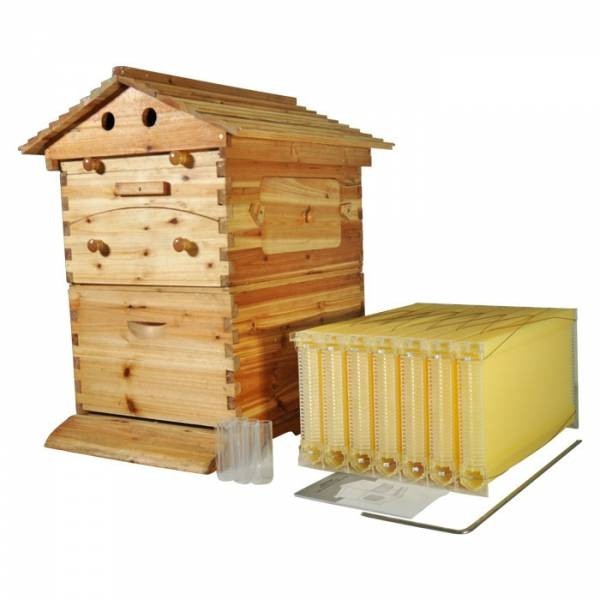
Langstroth Hive Wholesale
The Langstroth hive is a type of beehive designed by American entomologist Lorenzo Langstroth in 1852. It consists of a series of vertical frames in a box, with each frame containing a honeycomb. The bees build their comb in the frames, and the honey is stored in the comb. The hive is named after Langstroth, who designed it.
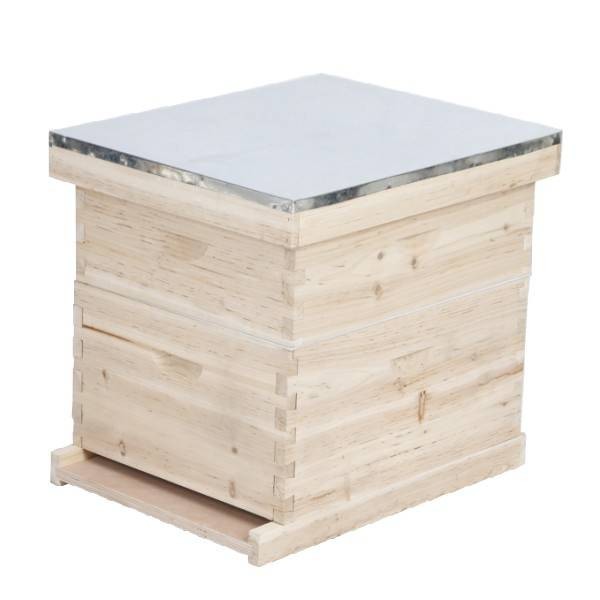
Boardman Entrance Bee Feeder Wholesale
This boardman Entrance Bee Feeder allows you to use your own Mason type jar or 5 lb. (2.27 kg) round jar for feeding at the entrance of your hive.
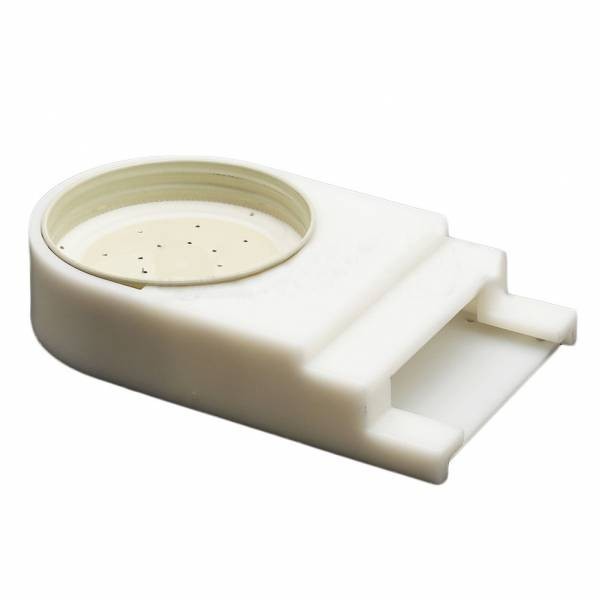
Wooden Queen Excluder
The wooden queen excluder is the most popular queen excluder for beekeeping.
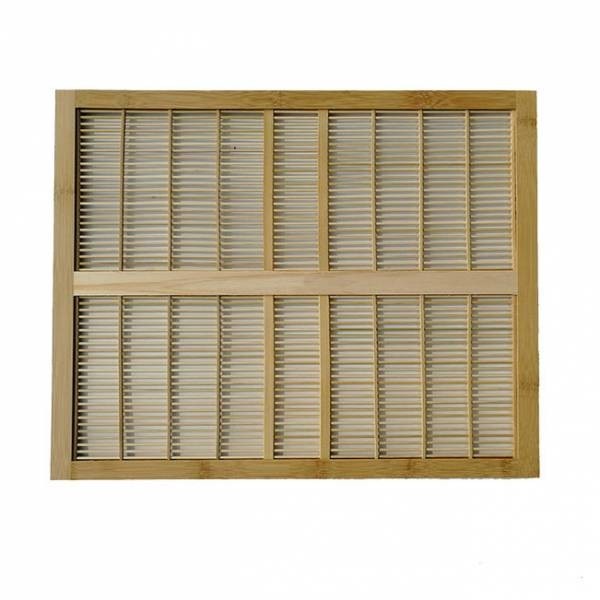
Stainless Steel Bee Smoker
The honeybee fear smog. Smog can make bees peaceful down and enable you to safely inspect your beehive. People use this characteristic to make the smog installment. It is the best tool to tames the honeybee.

Flat Hive Tool
A hive tool is a multi-purpose tool used by beekeepers to open, inspect and work with beehives. A hive tool is usually made of metal and has a flat end and a serrated end. The flat end is used to pry open hive bodies and frames, while the serrated end is used to scrape away wax and propolis. Hive tools are essential for any beekeeper, and a good hive tool should be sturdy, comfortable to hold and easy to use.
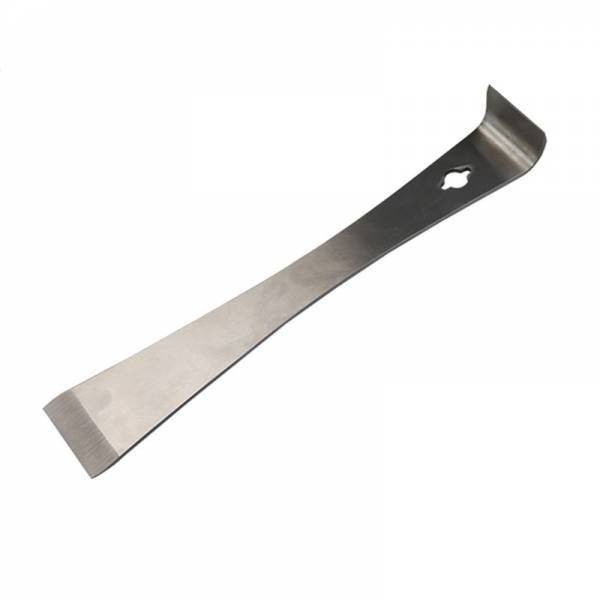
Manual 3 Frames Stainless Steel Honey Extractor
It's a 3-frame manual honey extractor with flat bottom and more durable. The honey extractor body is made from stainless steel and is machine rolled with seamless welding.
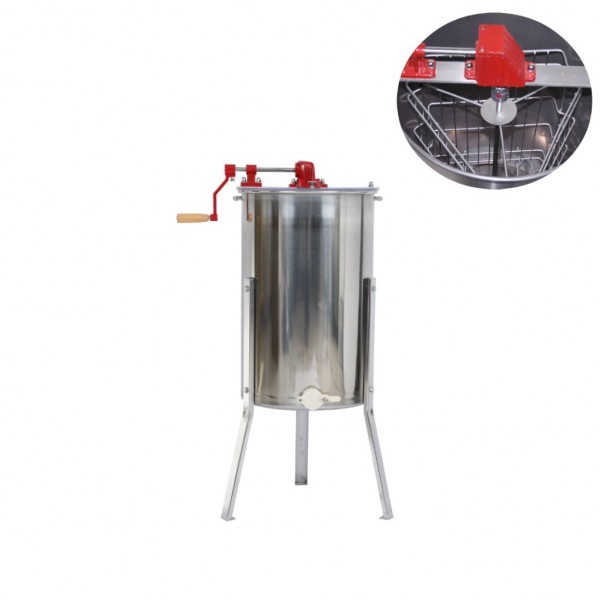
Hooded Veil Beekeeping Jacket
This beekeeping jacket is perfect for those who want to keep their bees close by. The hooded veil provides protection from bee stings, and the jacket itself is made of durable, breathable fabric.The hooded veil beekeeping jacket offers 4 front pockets two w/Velcro and the other open for quick access.
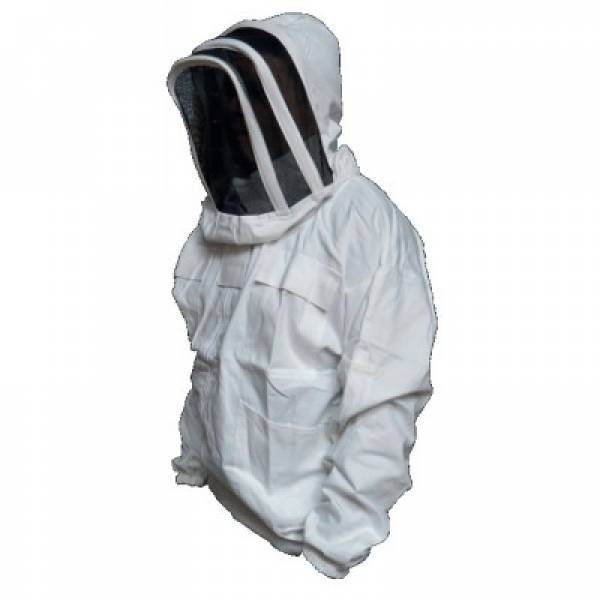
Cowboy Beekeeper Hat
This cowboy beekeeper hat is perfect for those who want to keep bees and look good doing it! The hat is made of 100% cotton and has a wide brim to keep the sun off your face. The wire in the brim also helps keep the bees away from your face.
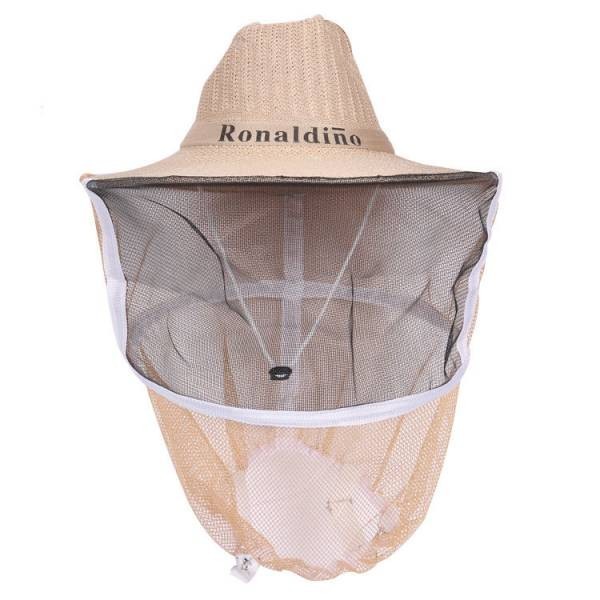
Beeswax Embossing Roller
Beeswax Embossing Roller made with beeswax embossing rollers are strong and durable, and will provide your bees with a safe and secure place to build their nest.
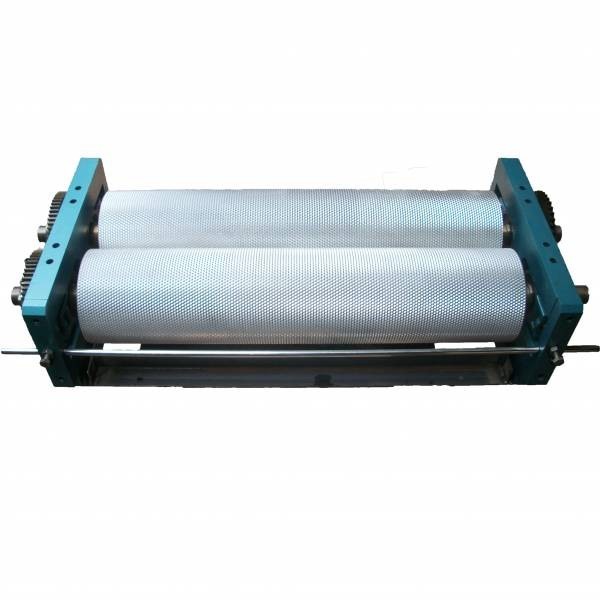
Honey Bucket Heater, Bee Blanket, Honey Blanket, Honey Bucket Warmer
There is 50L crystalline honey in the barrel.It melted in 16 hours (the melting time varies according to the type of honey, the surrounding temperature and environment), stirring once every hour can speed up the honey melting.

Beehive Entrance Reducer Wholesale
Beehive entrance reducer is a very effective tool in helping the bees stay warm over the deepest winter months.

Bee Frame Feeder
The bee frame feeder is a simple device that consists of a frame with a hole in the center. This hole is just big enough for a bee to fit through. The frame is placed over a container of sugar water or honey and the bee can access the food by crawling through the hole.
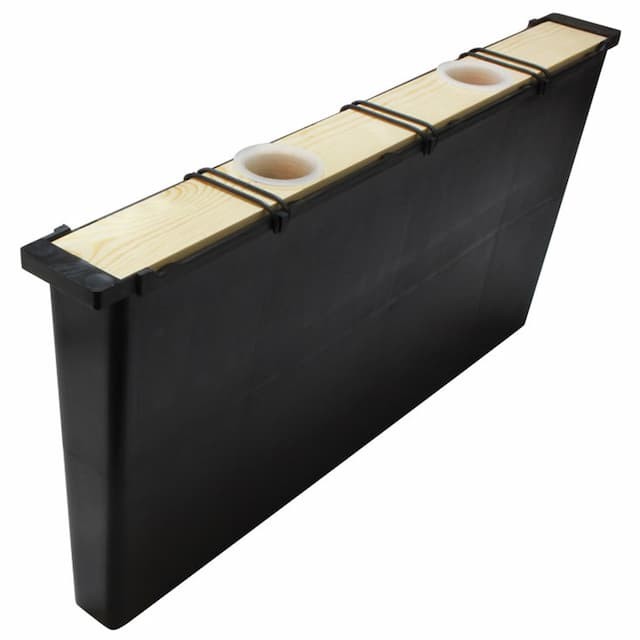
Uncapping Roller
Beekeeping manual beehive frame uncapping machine roller uncapper Uncapping both sides at the same time; 20 frames uncapped in less than 5 mins; no electricity or heat required; High-density Polyethylene Body.
